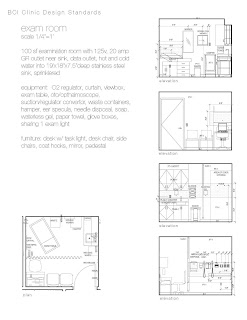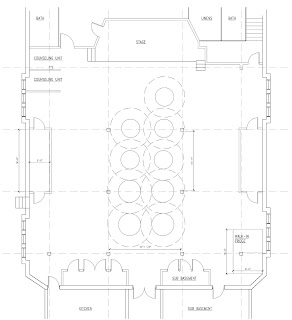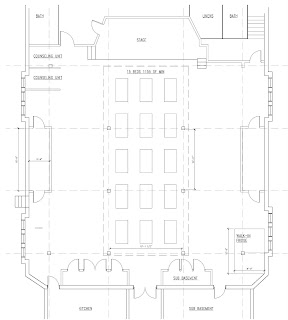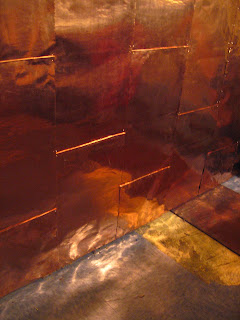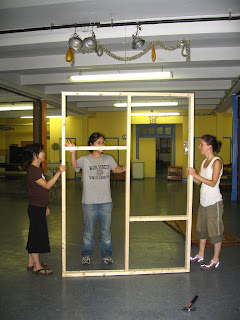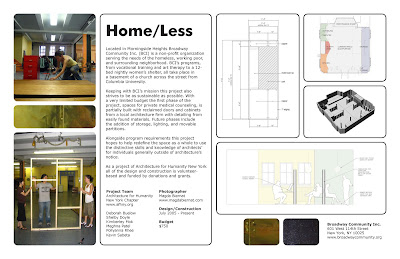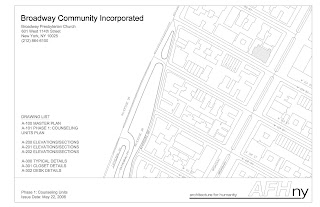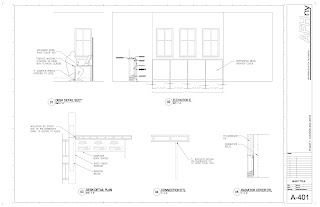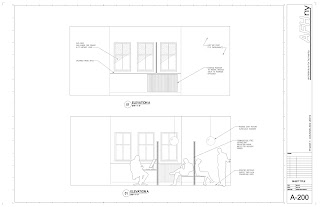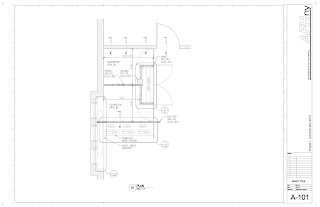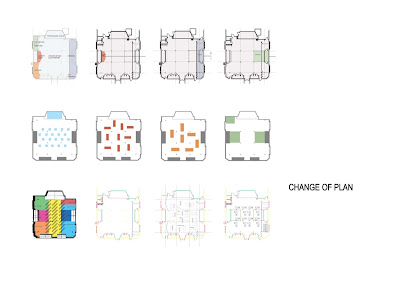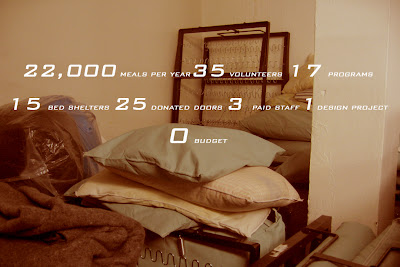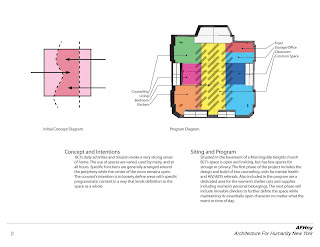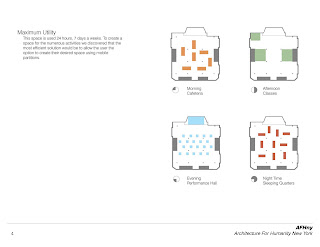Wednesday, August 29, 2007
BCI in the Times
In December the New York Times visited BCI for a story on the soup kitchen for the Dining Out section. Also on the site is an accompanying video which features me standing aimlessly in the background for about 3 seconds. I am wearing argyle.
Monday, August 27, 2007
Cot + Table Study
Wednesday, August 22, 2007
Architecture Leauge Submission

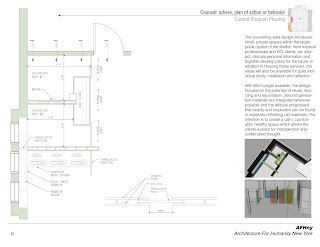
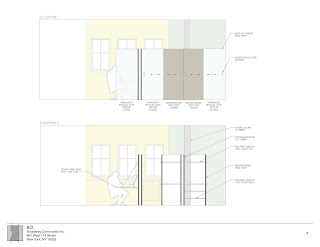
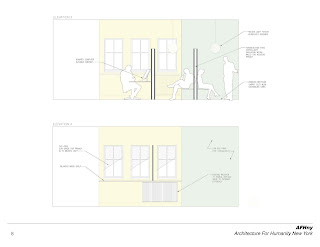
Home/Less
Appending words such as “sustainable” and “green” to a project often brings praise as if merely being environmentally sound is sufficiently responsible. Large projects may have the benefits of a budget for expensive materials and sexy marketing, but the definition of green should also encompass thinking about the greater implications of our actions in the world.
Located in Morningside Heights, Broadway Community Inc. (BCI) is a non-profit organization serving the city’s homeless population. Art therapy, job training, and a nightly women’s shelter are only some of their programs. But BCI aims not only to provide meals or a bed, but to build a community, assistance for individuals to rebuild their lives, and educate the public about poverty and disenfranchisement.
Located in Morningside Heights, Broadway Community Inc. (BCI) is a non-profit organization serving the city’s homeless population. Art therapy, job training, and a nightly women’s shelter are only some of their programs. But BCI aims not only to provide meals or a bed, but to build a community, assistance for individuals to rebuild their lives, and educate the public about poverty and disenfranchisement.
Faced with growing demands for their services BCI needed a plan to fulfill programmatic elements while also reimagining their space in the basement of a church. As members of the New York chapter of Architecture for Humanity we’ve worked for several months in our after-work hours and weekends on a design to enhance a space that many consider a home.
BCI considers environmental care as a consistent part of their mission and this project. As a volunteer-run project with no budget expensive materials are outside our consideration so the reuse of donated materials has informed all phases of the work, running against the idea of architecture reserved for the wealthy.
So ultimately our conception of green privileges our obligations to society and individuals too often ignored rather than the bottom line.
BCI considers environmental care as a consistent part of their mission and this project. As a volunteer-run project with no budget expensive materials are outside our consideration so the reuse of donated materials has informed all phases of the work, running against the idea of architecture reserved for the wealthy.
So ultimately our conception of green privileges our obligations to society and individuals too often ignored rather than the bottom line.
Thursday, August 2, 2007
New York Times on AFH
Today's House and Home section has a fairly lengthy article on Architecture for Humanity's work in Biloxi:
Design Steps Up in Disaster's Wake.
Design Steps Up in Disaster's Wake.
Subscribe to:
Posts (Atom)
